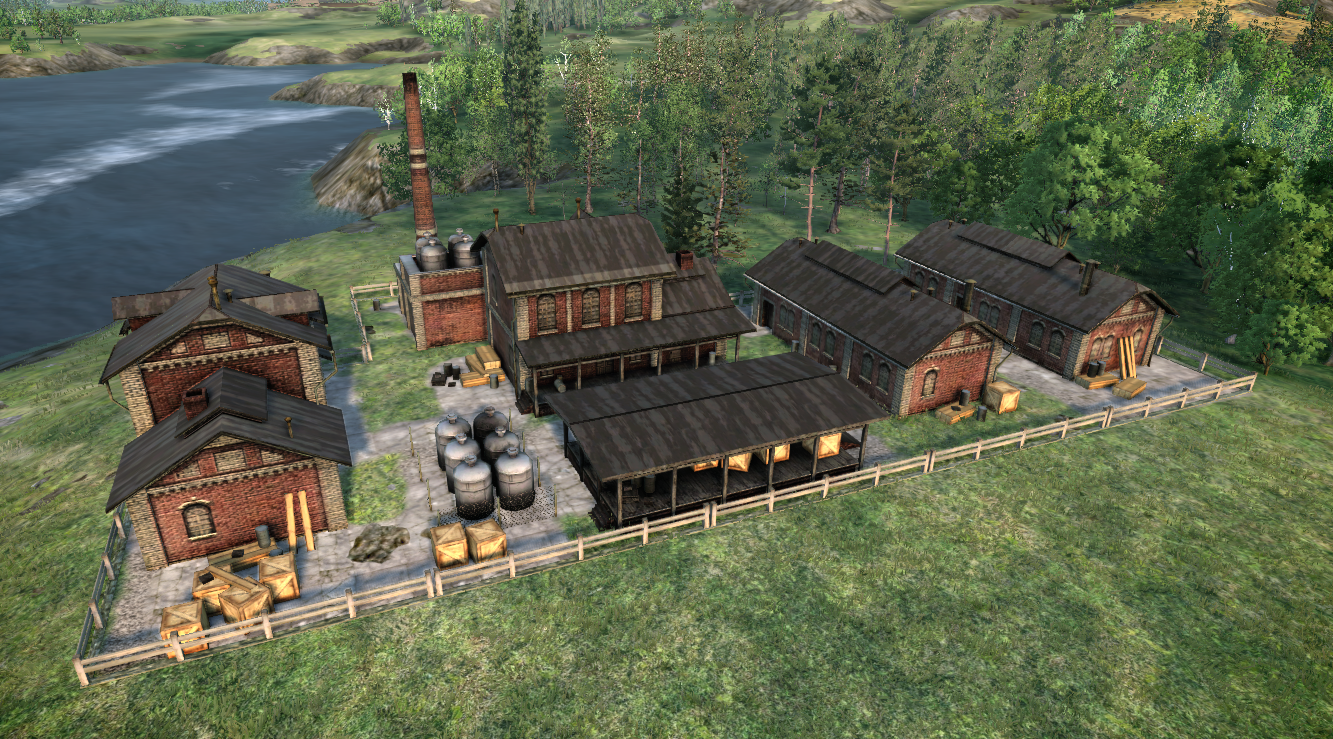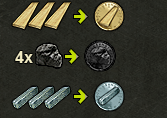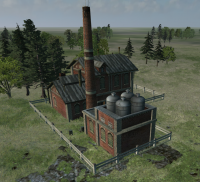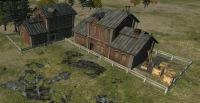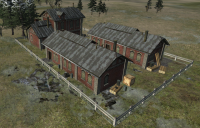Difference between revisions of "Toolworks"
(re-worded to make it read better) |
m |
||
| Line 3: | Line 3: | ||
| − | The Toolworks is where all the [[resources]] ([[File:icon timber.png|16px]] [[File:icon coal.png|16px]] [[File:icon iron.png|16px]])in the game are converted into the relevant tokens ([[File:token timber.png|16px]] [[File:token coal.png|16px]] [[File:token iron.png|16px]]). Each extension added to the Toolworks improves both the rate and the efficiency of conversion from resource to token. The base Toolworks always | + | The Toolworks is where all the [[resources]] ([[File:icon timber.png|16px]] [[File:icon coal.png|16px]] [[File:icon iron.png|16px]]) in the game are converted into the relevant tokens ([[File:token timber.png|16px]] [[File:token coal.png|16px]] [[File:token iron.png|16px]]). Each extension added to the Toolworks improves both the rate and the efficiency of conversion from resource to token. The base Toolworks always consumes a fixed number of resources per [[Game tick]]: 3 Timber ([[File:icon timber.png|16px]]), 4 Coal([[File:icon coal.png|16px]]) or 3 Iron ([[File:icon iron.png|16px]]). Each conversion is a separate process; therefore it can produce a single type of Token or all three types simultaneously. |
==Processes== | ==Processes== | ||
| Line 11: | Line 11: | ||
[[File:Toolworks_Rate.png|200px|Thumb|Left|Toolworks 1 with a high conversion]] [[File:Toolworks_Rate_Low.png|205px|Thumb|Left|Toolworks 2 with a low conversion]] | [[File:Toolworks_Rate.png|200px|Thumb|Left|Toolworks 1 with a high conversion]] [[File:Toolworks_Rate_Low.png|205px|Thumb|Left|Toolworks 2 with a low conversion]] | ||
| − | This shows that in a single map, between two separate Toolworks, one can produce 3 times as many Iron Tokens ([[File:token iron.png|16px]]) for every three units of Iron ([[File:icon iron.png|16px]]) supplied. This effect does not only affect Iron ([[File:icon iron.png|16px]]); Coal ([[File:icon coal.png|16px]]) and Timber ([[File:icon timber.png|16px]]) can both have a different conversion rates between Toolworks. Extensions work is in a similar manner, as each extension will provide higher number of Tokens at one Toolworks than the same extension for a different Toolworks on the map. In the case of both the base Toolworks and extensions, the number of resources required remains constant with the number tokens received changing between buildings. The only exception to this is the product storage extension | + | This shows that in a single map, between two separate Toolworks, one can produce 3 times as many Iron Tokens ([[File:token iron.png|16px]]) for every three units of Iron ([[File:icon iron.png|16px]]) supplied. This effect does not only affect Iron ([[File:icon iron.png|16px]]); Coal ([[File:icon coal.png|16px]]) and Timber ([[File:icon timber.png|16px]]) can both have a different conversion rates between Toolworks. Extensions work is in a similar manner, as each extension will provide higher number of Tokens at one Toolworks than the same extension for a different Toolworks on the map. In the case of both the base Toolworks and extensions, the number of resources required remains constant with the number tokens received changing between buildings. The only exception to this is the product storage extension which always has a 1 to 1 conversion on all three resources. |
==Extensions== | ==Extensions== | ||
Revision as of 20:12, 3 November 2017
Game Manual
- Basics
- Game content
- Infrastructure
- Vehicles
The Toolworks is where all the resources (![]()
![]()
![]() ) in the game are converted into the relevant tokens (
) in the game are converted into the relevant tokens (![]()
![]()
![]() ). Each extension added to the Toolworks improves both the rate and the efficiency of conversion from resource to token. The base Toolworks always consumes a fixed number of resources per Game tick: 3 Timber (
). Each extension added to the Toolworks improves both the rate and the efficiency of conversion from resource to token. The base Toolworks always consumes a fixed number of resources per Game tick: 3 Timber (![]() ), 4 Coal(
), 4 Coal(![]() ) or 3 Iron (
) or 3 Iron (![]() ). Each conversion is a separate process; therefore it can produce a single type of Token or all three types simultaneously.
). Each conversion is a separate process; therefore it can produce a single type of Token or all three types simultaneously.
Processes
The number of Tokens that a Toolworks returns for a particular resource changes between different buildings on the same map. As a result, it is always worth looking at all the Toolworks on the map and finding out which converts a particular resource the best. For example, within the same map two Toolworks had the following base operations:
This shows that in a single map, between two separate Toolworks, one can produce 3 times as many Iron Tokens (![]() ) for every three units of Iron (
) for every three units of Iron (![]() ) supplied. This effect does not only affect Iron (
) supplied. This effect does not only affect Iron (![]() ); Coal (
); Coal (![]() ) and Timber (
) and Timber (![]() ) can both have a different conversion rates between Toolworks. Extensions work is in a similar manner, as each extension will provide higher number of Tokens at one Toolworks than the same extension for a different Toolworks on the map. In the case of both the base Toolworks and extensions, the number of resources required remains constant with the number tokens received changing between buildings. The only exception to this is the product storage extension which always has a 1 to 1 conversion on all three resources.
) can both have a different conversion rates between Toolworks. Extensions work is in a similar manner, as each extension will provide higher number of Tokens at one Toolworks than the same extension for a different Toolworks on the map. In the case of both the base Toolworks and extensions, the number of resources required remains constant with the number tokens received changing between buildings. The only exception to this is the product storage extension which always has a 1 to 1 conversion on all three resources.
